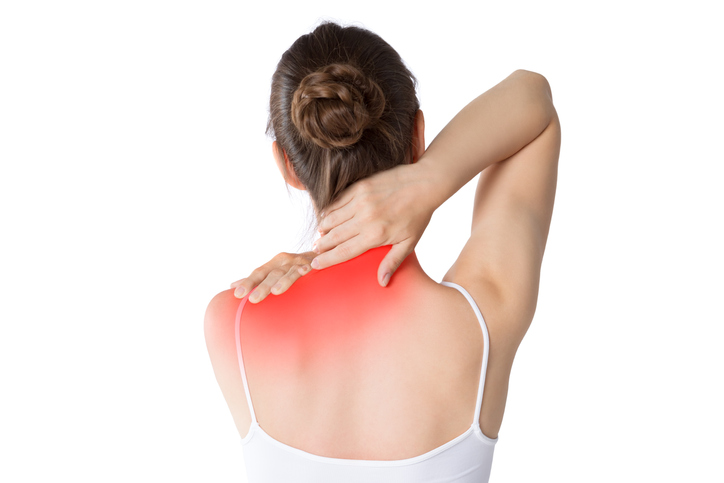Pain
What Is Neck Pain?

The cervical spine, or neck, consists of the first seven vertebrae of the spine. The neck supports the head, protects the spinal cord, and is the most flexible part of the spine. It contains muscles, bones, ligaments, facet joints, and nerves. Inflammation, injuries, and abnormalities in any of these components can cause neck pain or stiffness.
Neck pain ranges from mild to severe and can be acute (lasting days to weeks) or chronic (lasting longer than three months). Pain may be aching, burning, or sharp. Although the most common cause of neck pain is muscle strain, neck pain can also be a symptom of an underlying or serious condition. It’s important to seek medical care if pain is radiating to a shoulder or arm or if numbness occurs in an arm or hand. Symptoms that may accompany neck pain include the following:
- Pain that worsens when holding the head in certain positions or when moving the neck
- Sensitivity or pain from light pressure placed on the neck
- Pain that radiates from the neck to other areas of the body (e.g., arms, hands, etc.)
- Muscle spasms or tightness
- Stiffness or reduced mobility of the neck
- Cervicogenic headaches
Causes of neck pain
The causes of neck pain are varied and diverse. Some common causes of neck pain include the following:
- Muscle strain
Muscle strain is the most common cause of neck pain. A neck muscle strain occurs when a muscle in the neck is stretched too far and tears. This can happen due to poor posture, improper support of the neck (e.g., awkward positioning of the neck during sleep), or repetitive motions that put stress on the neck muscles (e.g., physically demanding work that involves overhead lifting). - Worn joints
The aging process naturally causes “wear and tear” on the bones and joints, including those in the neck. Osteoarthritis involves the gradual breakdown of cartilage in one or more joints. When the protective cushioning of cartilage deteriorates, the bones in the joint eventually rub together, causing inflammation and pain. - Nerve compression
Nerve compression in the neck occurs when a nerve root in a cervical vertebra is inflamed or damaged. A “pinched nerve” can occur due to a herniated disc, bone spur, and although rare, a mass or tumor in the spinal canal. Symptoms include pain; tingling or numbness in a shoulder, arm, or fingers; altered reflexes; and muscle weakness. - Injury
Neck pain can be caused by trauma or injury to the neck muscles, tendons, ligaments, joints, nerves, or intervertebral discs. Sudden, forceful back-and-forth movement of the neck, known as whiplash, strains the soft tissues in the neck. Whiplash injury most commonly occurs during rear-end vehicle collisions, but it can also occur during other events, such as contact sports, physical abuse, falls, etc. - Health conditions
Health conditions such as rheumatoid arthritis, fibromyalgia, meningitis, spinal stenosis, degenerative disc disease, infection, cancer, and various other conditions can cause neck pain. - Stress
Stress can increase muscle tension, especially in the neck and shoulders. When stress is chronic, muscles are often in a constant state of tension, which causes neck pain and stiffness.
Risk factors
Factors that increase the likelihood of developing neck pain include the following:
- Poor posture
- Obesity
- Weak abdominal muscles
- Smoking
- Unhealthy sleep position


















